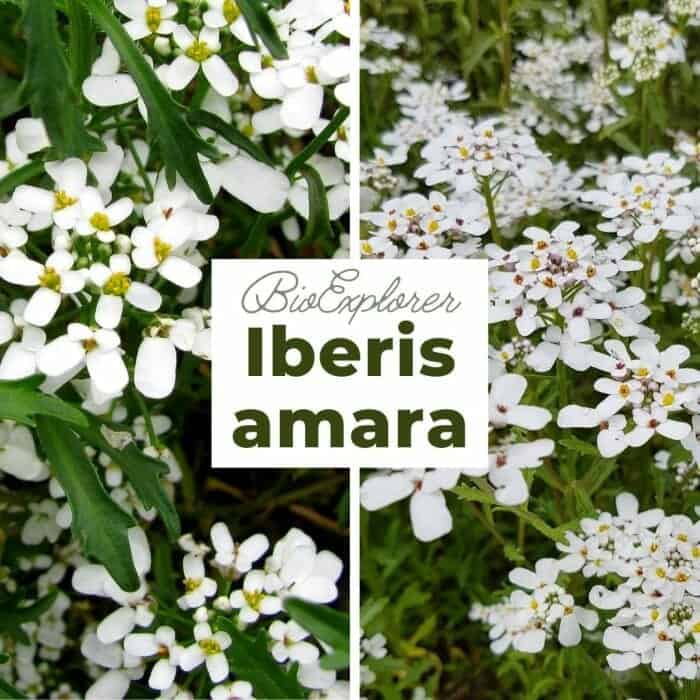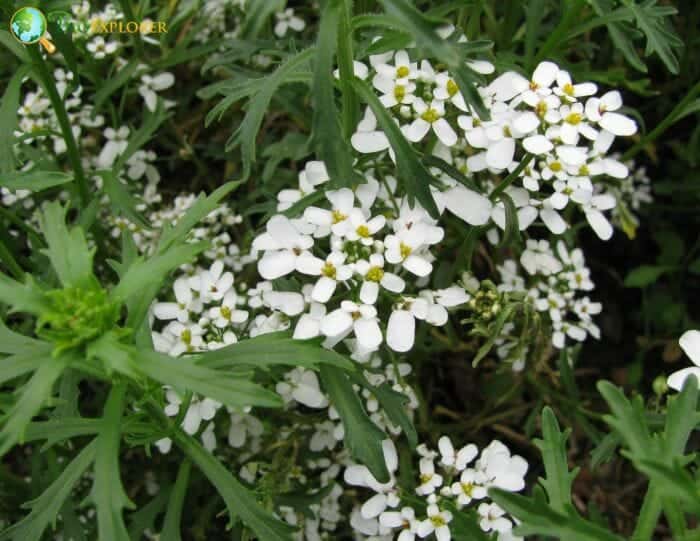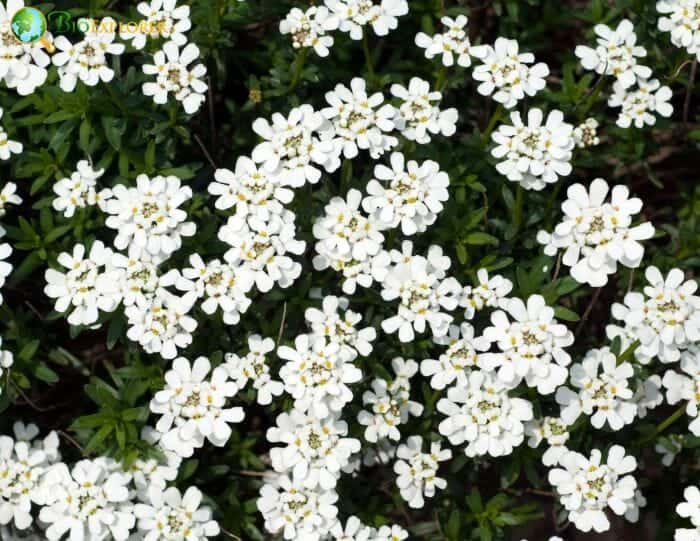
Iberis amara is sometimes a wild ornamental annual plant that belongs to the Brassicaceae (mustard) family.

Iberis amara, also known as bitter Candytuft, arugula candytuft, and wild Candytuft, is a flowering species of Iberis native to Switzerland, Spain, Italy, Great Britain, Germany, France, and Belgium.

The Iberis genus includes around 40 species[1]. Iberis amara can be confused with 2 similar garden species, Perennial Candytuft and Garden Candytuft. The leaves of Garden Candytuft are usually toothless and glabrous (including the leaf margin).

Perennial Candytuft is a taller plant (up to 60cm) with fleshy and thick leaves that snap off with an audible sound.

Iberis amara is an annual flowering plant that can reach 40cm tall. Its flowers are 6-8mm in diameter and are white or pale purple. Each flower has 4 petals, with the outer two petals being significantly longer than the inner two.
The flowers appear on flattened heads that elongate into fruit. The 3-6 mm fruits are almost round, winged, and with a deep notch. The leaves narrow towards the base, shiny with teeth towards the tip of the blade.
The leaves are mostly hairless, except that there are often white hairs along the edge of the leaf. The leaves alternate on a firm stem, slightly sloping and hairy at least below.











